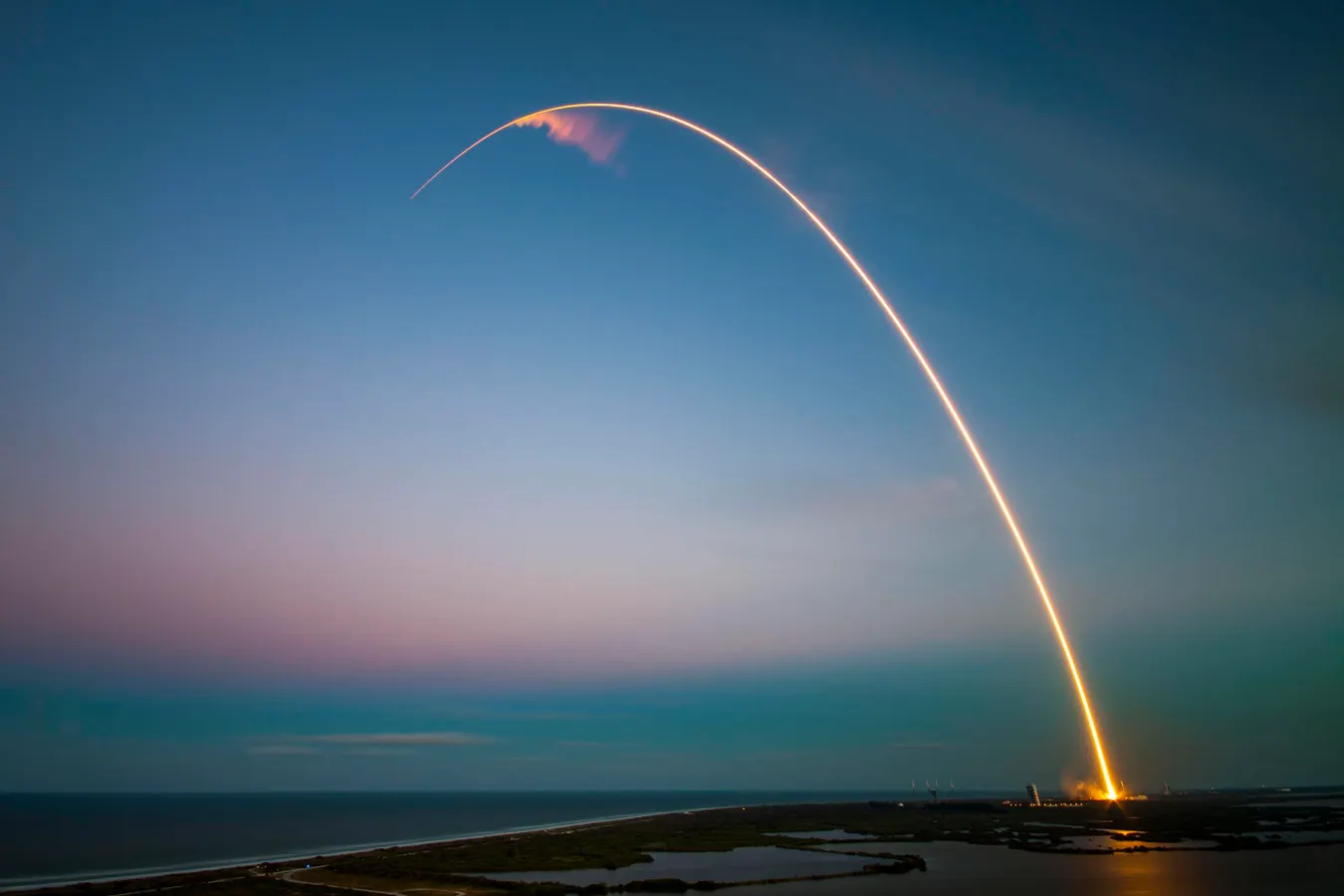Copyright forbes

As SES launches its satellites into geostationary orbit, it has been beaming broadband connections to blitzed Ukrainians 36,000 kilometers below. (Photo by NASA via Getty Images) NASA via Getty Images Even after being targeted in physical and cyber-attacks, the global satellite giant SES aims to push forward with humanitarian missions to provide lifesaving internet connections to Ukraine’s bombarded citizens and rescue workers, the outfit’s chief executive says in an interview. While reinventing SES right after its merger with the storied American satellite maker Intelsat, the expanding spacecraft operator will double down on its philanthropic outreach worldwide, even in hazardous hotspots, CEO Adel Al-Saleh tells me. Al-Saleh says the entire team at SES is “very passionate” about connecting outliers scattered across the planet who are stranded outside the realm of the World Wide Web, including those who have been ejected from the Web through some natural or human-created catastrophe. The Luxembourg-based SES, he says, aims to co-lead the crusade to help lower the borders around the Web to admit the one-third of the global populace, or about 2.6 billion people, who are now trapped on the other side of the digital divide. “We’re quite serious about supporting the world,” Al-Saleh says, with ongoing campaigns to provide low-cost Web connections across parts of Central Asia, Latin America, Africa and “remote islands across the Pacific.” MORE FOR YOU This quest to radiate broadband from the outfit’s celestial satellites to peoples across the planet below includes those whose terrestrial internet networks have been bombed into ruins. When Kremlin commanders started blasting Ukraine’s civilians and communications towers with missiles, in the opening days of the invasion, Intelsat swiftly joined forces with the humanitarian tech group Help.NGO to speed lifesaving satellite terminals into the shell-shocked country. Russian missile brigades have been pummeling Ukrainian cities and cathedrals, ancient cultural centers and modern internet networks since the start of the invasion three years ago (Photo by NATALIA KOLESNIKOVA / AFP) (Photo by NATALIA KOLESNIKOVA/AFP via Getty Images) AFP via Getty Images Even as Russian rockets raced across the skies over Ukraine’s cities, striking ancient cathedrals and modern medical centers, Help.NGO rushed to set up wireless hotspots in makeshift havens across the cratered democracy, Brendan Harvey, the group’s executive director, told me in an earlier interview. The group also provided broadband lifelines to Médecins Sans Frontières (Doctors without Borders) as its physicians were deployed across field hospitals in Ukraine, and to the UN Secretary General during the perilous journey from the Polish border to the drone-pelted capital Kyiv. Then-CEO Dave Wajsgras recounted in an interview over the summer, when he still headed Intelsat, that reactivating a longstanding alliance with Help.NGO to set up internet sanctuaries in strafed Ukraine was a high priority for the path-breaking satellite operator. “We believe it’s important to support these types of missions around the world,” Wajsgras told me. Now, Adel Al-Saleh, who negotiated the contours of the just-finalized merger between SES and Intelsat with Dave Wajsgras, has pledged to press on with these philanthropic operations across the globe, including restoring internet access in Ukraine, even as the bombs continue to drop. Joint missions with Help.NGO, Al-Saleh confirmed, will continue into the future. Yet there are expanding signs that Russia’s missile strikes on Ukraine’s internet gateways, including on the mobile satellite terminals being set up in city squares, could one day skyrocket into low Earth orbit. Apparently infuriated that global White Knights like Intelsat and SpaceX have raced to prevent Ukraine from being trapped inside a digital Berlin Wall, cut off from the internet, Russian President Vladimir V. Putin has been dispatching his lieutenants to a series of UN gatherings to threaten Moscow could begin shooting down any Western satellites aiding Kyiv. Russian President Putin has despatched his envoys to a series of UN forums to warn Moscow could begin shooting down Western satellites aiding Ukraine. The UN's General Assembly has responded through measures like suspending Russia from the UN Human Rights Council. (Photo by TIMOTHY A. CLARY / AFP) (Photo by TIMOTHY A. CLARY/AFP via Getty Images) AFP via Getty Images Yet Robert Mellberg, a partner at the Swedish satellite terminal producer Satcube, which turns out cool compact transceivers that journalists can use to broadcast from even blitzed city centers, points out that most SES/Intelsat satellites are stationed in geosynchronous orbit, 36,000 kilometers above the clouds and far beyond the reach of Moscow’s anti-satellite missiles. Satcube’s terminals connect to these SES spacecraft, which are virtually invulnerable to Russia’s kamikaze ASATs, Mellberg says in an interview. Based in the Swedish seaport city of Gothenburg, the Satcube executive says the Kremlin’s cyber-commandos have at the same time stepped up their attempts to jam Western satellite transmissions. This is another portent, he says, of the looming space battles of the future, the clash of civilizations that is set to move into the heavens. Embedded throughout the technology of Satcube’s terminals, he says, are myriad defenses against “electronic warfare.” Asked about these burgeoning electronic assaults, Adel Al-Saleh says: “Look, we are a critical infrastructure provider.” “Therefore, we are a target of attacks, right, all kinds of attacks, cyber attacks, physical attacks and things like that.” “So we design our networks with resilience and we work very hard to protect ourselves,” he adds, “right from the right technologies with the right diligence, with the right focus.” With a fleet of super-satellites that dominate geostationary orbit and medium Earth orbit, he says, SES’s multi-orbit capability “gives you that advantage. It gives you that additional resilience.” Fleets of SES satellites dominate geostationary orbit, and are continuously strengthened against would-be attacks from terrestrial foes (Photo by Reuter Raymond/Sygma via Getty Images) Sygma via Getty Images The entire architecture of the SES satellite system is like an impenetrable citadel, and is constantly evolving to hone next-generation defenses. The combined Euro-American outfit likewise features the globe’s most advanced and extensive ground infrastructure, with futuristic teleports and satellite arrays that crisscross the continents. As Moscow escalates its testing of Western defenses along multiple fronts, including satellite transmissions, spacecraft operators and transceiver designers have all raced to adapt, Satcube’s Mellberg says. “We’re a target of all these attacks,” Adel Al-Saleh says. “Jamming is one of them.” “And yes, we are prepared, both from a satellite design point of view, from a network architecture point of view, to be able to manage those interferences and get through them.” “We also use the international forums to make sure that that’s clearly understood,” adds Al-Saleh, who holds an engineering degree from Boston University and moved from the upper echelons of IBM to Deutsche Telekom’s Board of Management before being recruited to head up SES last year. As the Earth’s geopolitical fault lines shift, even the celestial realm is changing. “Space is becoming super important,” he says. “It’s very strategic.” “In the past, you know the contention in the world was about what territory you have, your allies, do you have assets in these territories.” “And that has shifted to space.” “So everybody’s investing in space.” “Everybody’s putting their rockets up.” The EU, the European Space Agency and the SpaceRISE coalition headed by SES are preparing to launch the IRIS2 constellation to demonstrate Europe's independence and strength as a space power (Photo by Martin Bertrand / Hans Lucas / Hans Lucas via AFP) (Photo by MARTIN BERTRAND/Hans Lucas/AFP via Getty Images) Hans Lucas/AFP via Getty Images “So it’s critical that the governments continue to invest and that’s why we're seeing a lot of demand.” This new space race also extends to the great space powers, and the independent NewSpace players, competing to loft their constellations of satellites into concentric rings around the Earth. The European Union, to underscore its independence and strength in space, is set to launch its €10.6 billion IRIS² constellation across twin orbits, and the European Space Agency has anointed SES to head the SpaceRISE coalition commissioned to construct these star satellites circling the planet. On signing an agreement with SES to craft the dual-orbit constellation, Timo Pesonen, the European Commission’s Director-General for Defense Industry and Space, declared: “IRIS² underpins our strategic autonomy and defense capacity, promotes our competitiveness, and energizes public and private sectors’ cooperation.” “We are honored to lead the SpaceRISE consortium,” Adel Al-Saleh said while joining the new space pact. “IRIS² is integral to Europe’s space strategy,” he added. “By strategically coming together, we will be able to ensure architecture resiliency and security from Day 1 of the system launch.” The constellation will be designed to provide super-secure communications channels for defense planners, national security councillors and high-ranking diplomats across the EU, an alternative to the terrestrial networks that now interconnect Europe’s top leaders, a system that can be relied on during times of terrestrial peace and times of celestial war. Despite the pact’s recognition of SES’s role as a pole star of the European space sector, Al-Saleh told me during our interview that SES is actually a planet-wide player. “People look at us as, yes, you’re European because you're headquartered in Luxembourg and your roots are there.” “But we have as deep roots in the United States now, right, with the Intelsat acquisition.” As a Colossus gazing out across twin continents, and up into the heavens, SES envisions an ever-expanding role on the world stage. “We have presence on both sides of the Atlantic.” “Our customers are Western allies.” “Our values are aligned with the democratic values of the Western allies, and therefore that’s where we focus our business between those nations.” “We are a trusted partner to many governments,” he adds, “the Allied governments, both the United States and Europe and their allies, the Five Eyes countries around the world.” Editorial StandardsReprints & Permissions



